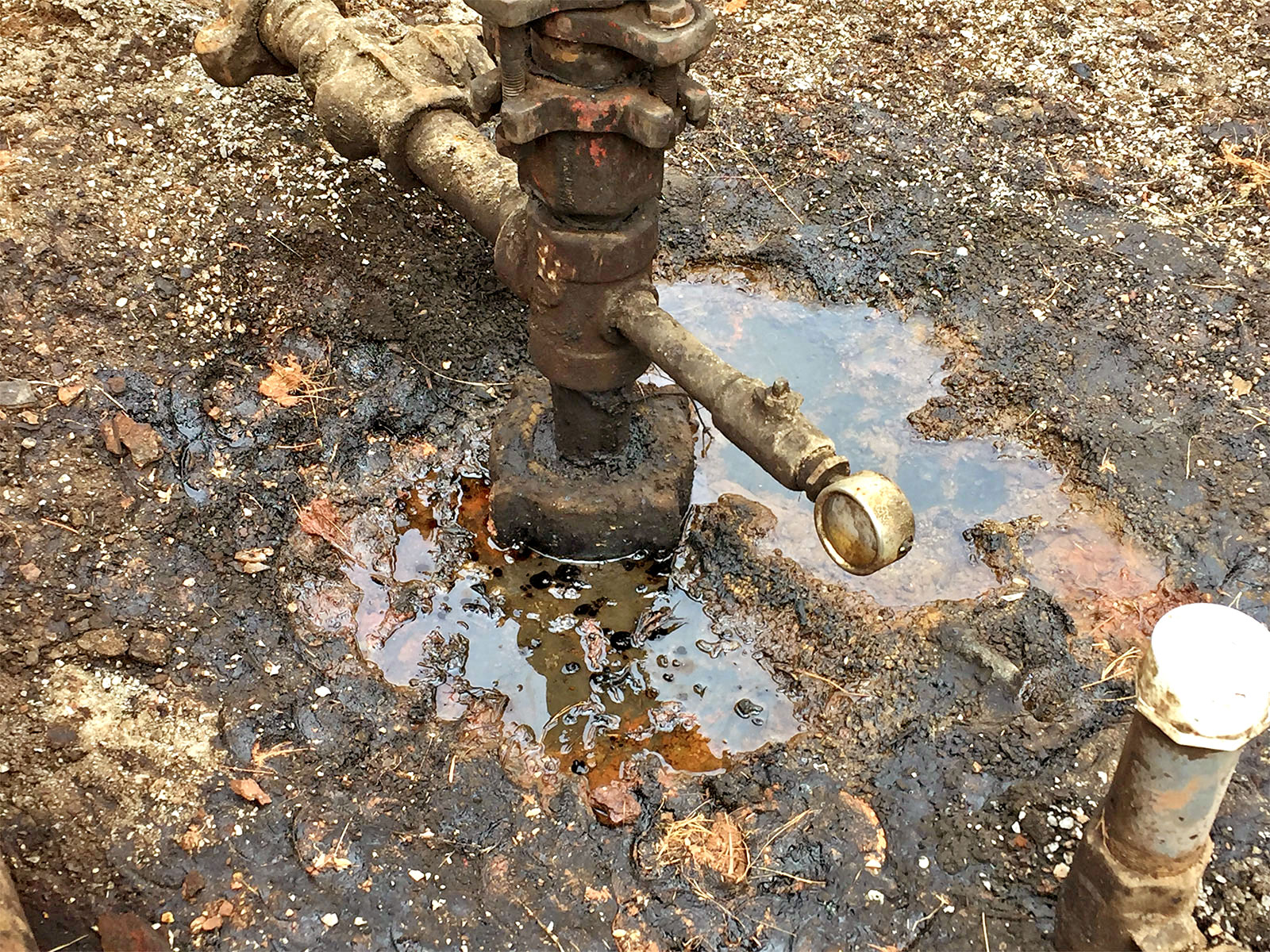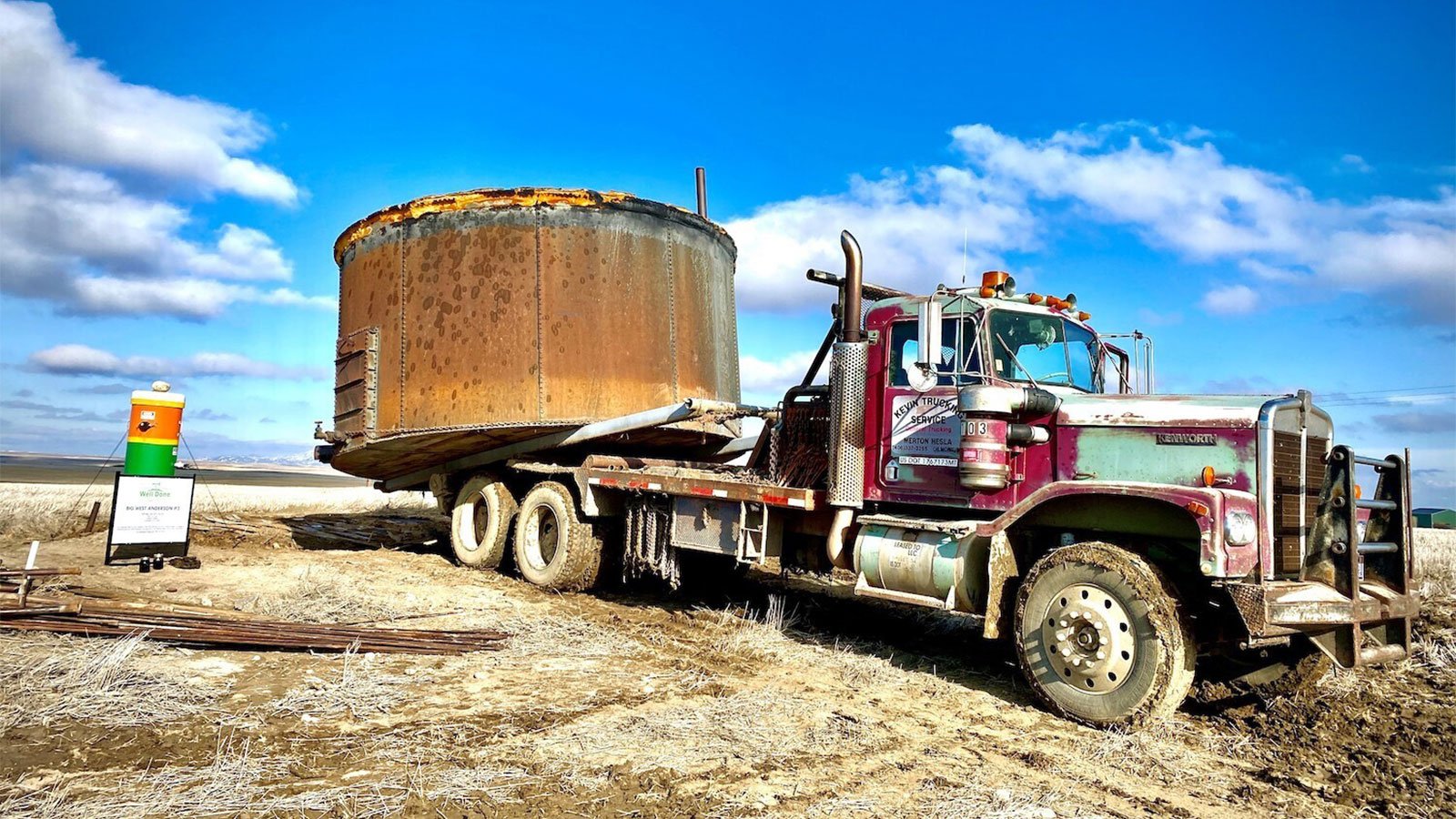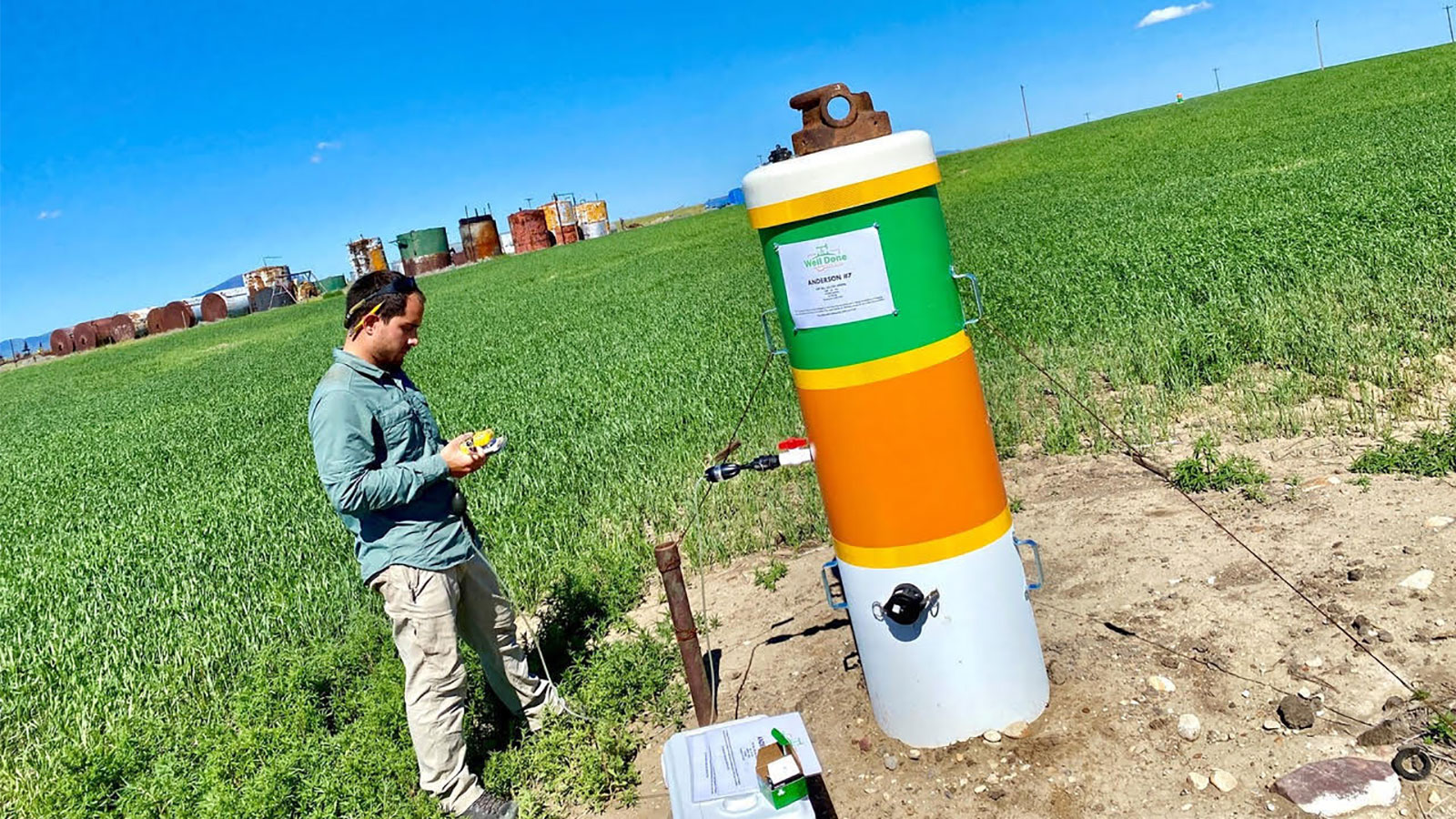In that case, a landowner might be waiting a long time. The state currently has just over 800 wells on its list of plugging projects, according to a spokesperson for the Oklahoma Corporation Commission, the state agency that regulates the oil and gas industry, and more than 12,000 more on its list of “orphaned” wells. (In Oklahoma, that term refers to abandoned wells that could technically be “adopted” and pumped again — but the spokesperson said “many of them” are fated to move over to the state’s plugging list.) In 2019, the state plugged just 138 abandoned wells.
This isn’t just a problem for Oklahoma. There were more than 50,000 wells on state cleanup lists across the country in 2018, and states estimated there were somewhere between 200,000 to 750,000 more abandoned wells that weren’t in their records. If you include wells that are “idle,” meaning they may still have an owner but haven’t produced any oil or gas in years — and are at risk of getting thrust into state hands if their owners go bankrupt — the count reaches around 2.1 million, according to the U.S. Environmental Protection Agency.
When wells are left unsealed, they can become pathways for oil, gas, or briny water to migrate into groundwater and soil. The equipment is a hazard for wildlife, livestock, and unsuspecting humans. But increasing attention is being paid to another risk — an unknown number of unplugged wells leak methane, a powerful greenhouse gas, 86 times more effective at heating up the planet than carbon dioxide over the first 20 years it’s in the atmosphere. At high enough concentrations, methane carries a risk of explosion, and it’s often accompanied by other chemicals that are dangerous to human health, like benzene, a known carcinogen linked to leukemia and low birth weights.
Bobby Wright, center, poses with his father, Bob, left, and his grandfather, Troy Lewellen. OAP Fund
After helping Lewellen, the Wrights became interested in the problem of abandoned wells — which started to look, to them, like an opportunity. Plugging them was something they had the skills and contacts to facilitate, if they could raise the money to do it. It would also be a way for them to give back to their community and the environment after careers working in oil and gas. In April, they filed for nonprofit status. But they weren’t the first. At least two other nonprofits, Native State in Texas and the Well Done Foundation in Montana, both also founded by oil and gas industry insiders, have formed in the past year with the same mission. The Wrights named their organization OAP Fund, short for “Orphaned and Abandoned well Plugging Fund.”
“In hindsight,” Wright said, “maybe we should not have put it as ‘fund.’ That tends to make people think we already have the money.”
Money is at the heart of the abandoned wells problem. The number of wells has already ballooned far beyond what state budgets and manpower can handle, and experts say it’s on the verge of multiplying. “The numbers are staggering,” Greg Rogers, a senior advisor at the financial think tank Carbon Tracker, told Grist. “There’s no war chest at the corporate level or the state level to pay for that.”
There’s interest in bankrolling solutions at the federal level, but it’s unclear whether the money will ever come through. In July, the House of Representatives passed a bill that would provide states with $2 billion over five years to create jobs plugging abandoned wells. Its approval came with almost no Republican support, and the legislation has since stalled in the Senate.
In the meantime, the Wrights and others like them are searching for other funding streams to support their mission — and they’re trying to figure out whether there may still be ways to extract value from the holes themselves.
 About a quarter-mile from Troy Llewellen’s house on his ranch were three old oil wells — two of which, including this one, were abandoned. OAP Fund
About a quarter-mile from Troy Llewellen’s house on his ranch were three old oil wells — two of which, including this one, were abandoned. OAP Fund
Curtis Shuck used to be president of an oilfield services company in North Dakota. But it wasn’t until he had left the industry to start his own consulting firm that he got his first glimpse of the abandoned well problem. He was visiting farmers in Toole County, Montana, trying to source grain for the Port of Northern Montana — an inland logistics hub where trains and tractor-trailers exchange goods and machinery — when he learned that they were dealing with hazardous old oil equipment left behind on their land.
 In 2019, Curtis Shuck, a former president of an oil field services company, founded the Well Done Foundation to plug abandoned wells. Well Done Foundation
In 2019, Curtis Shuck, a former president of an oil field services company, founded the Well Done Foundation to plug abandoned wells. Well Done Foundation
“This is not right at any level,” he thought. So last fall, Shuck started the Well Done Foundation with the goal of raising money to plug wells. Knowing some of them were leaking methane, he thought he might be able to fund the projects, at least in part, through the carbon market. That thinking led him to Eric Ripley at the American Carbon Registry.
The American Carbon Registry, or ACR, is a nonprofit that develops standards for carbon offsets and maintains a list of accredited projects. Companies or individuals looking to neutralize their contribution to climate change can purchase credits through the registry, helping to fund projects that reduce emissions, like forests that are managed to store more carbon, or dairies that capture the methane from their manure pits. Ripley, ACR’s director of industrial programs, had already been thinking about abandoned wells before connecting with Shuck. He wasn’t convinced that the potential revenue from carbon credits — which are tied to the amount of methane a project mitigates — would be enough to cover the cost of the project itself. But Shuck’s nonprofit, mission-based model changed that math, since Shuck could raise the rest of the required funding through donations. “The carbon finance piece could just be one leg of a stool to get these projects financed,” Ripley said.
 A large truck removes the tank at Big West Anderson #3 well in Toole County, Montana. Well Done Foundation
A large truck removes the tank at Big West Anderson #3 well in Toole County, Montana. Well Done Foundation
Now ACR is developing a new methodology that will standardize the way abandoned well projects can participate in the registry, enabling the Well Done Foundation, OAP Fund, and others to sell credits through it. Well Done has already plugged three wells in Toole County through a mix of early fundraising success and some out-of-pocket spending by Shuck. But he has ambitions to expand to other states, and thinks the carbon offset market could be a game-changer. “We’re hopeful that by this time next year we’ll be out there doing our thing under a carbon finance program,” Shuck said. “Our vision is to be able to do this at a much larger scale.”
How useful the carbon offset program will be in addressing the scale of the problem is unclear. The cost of plugging an oil or gas well varies, but states report average costs between $3,500 and $80,000 per well. (Wright said the average cost of plugging in Oklahoma is around $25,000.) Shuck’s goal is to raise $30,000 per well in Montana, which includes the cost of remediating the land afterward. These numbers are for mostly older, shallower wells — there’s little data on the cost of plugging modern shale wells, where the holes tend to be deeper and may even cut horizontally under the earth. Based on a small handful of plugging reports for deeper wells in Wyoming, Ohio, and Australia, Carbon Tracker found that costs grew exponentially with well depth.
Wright’s father told Grist he knew of a recent plug job in Oklahoma that ended up costing $800,000. “Each well is kind of a one-off,” Bobby, or the younger Wright said. “You don’t know what’s going to happen down in the hole until you get in it.”
 Well Done Foundation volunteer Chris Steuer collects emission data from well Anderson #7 in Toole County. Well Done Foundation
Well Done Foundation volunteer Chris Steuer collects emission data from well Anderson #7 in Toole County. Well Done Foundation
You also don’t know how much methane is coming out of the hole until you measure it — and that’s what will determine the amount of funding Shuck or others might be able to raise through carbon credits. Many projects won’t be eligible, since not all abandoned wells leak methane. Of those that do, many are emitting at such low rates that they wouldn’t generate enough credits to make sense as an offset project. Ripley said the best candidates will be the abandoned wells that researchers call “super emitters.” About 16% of leaks account for 98% of emissions from abandoned wells, according to one study.
Based on published emissions data and current offset prices, Grist estimates that the credit sales from even the largest emitters may only generate a few thousand dollars. However, Ripley told Grist that based on unpublished field data, ACR believes it’s possible some wells could be worth tens of thousands.
Scientists Grist interviewed for this story agree that it’s possible there are much larger emitters out there that they haven’t discovered yet. Mary Kang, a leading researcher on abandoned wells who is also helping ACR develop its offset methodology, told Grist that there are only about 600 published measurements of methane from abandoned wells in the U.S. and Canada. Considering there are millions of wells nationwide, “You can see how small that sample is and how likely it is that we might be missing some information,” she said. There are not yet any published measurements from Texas or Kansas, states that are home to a large percentage of the nation’s abandoned wells.
A carbon offset program could create a market-based incentive to find the wells that are the worst emitters and plug them up. It could also prove to be a boon for science, helping to scale up monitoring of abandoned wells and improve greenhouse gas emissions models. And despite its limited application, there’s hope that it might also help stanch the tide of new abandoned wells ending up on state plugging lists to begin with.
PrintEmily Pontecorvo | Radio Free (2020-12-01T07:59:38+00:00) These oil and gas veterans are trying to clean up the industry’s mess, one well at a time. Retrieved from https://www.radiofree.org/2020/12/01/these-oil-and-gas-veterans-are-trying-to-clean-up-the-industrys-mess-one-well-at-a-time/
Please log in to upload a file.
There are no updates yet.
Click the Upload button above to add an update.
